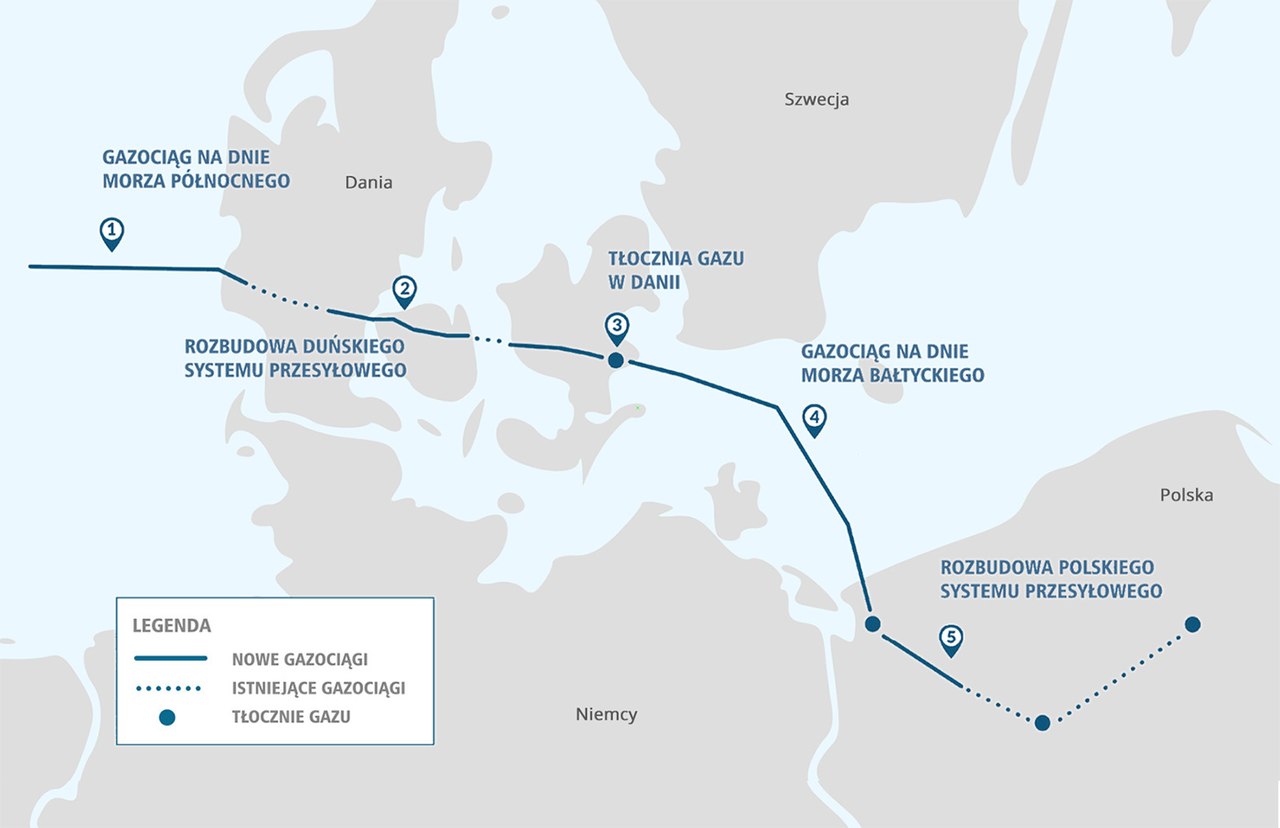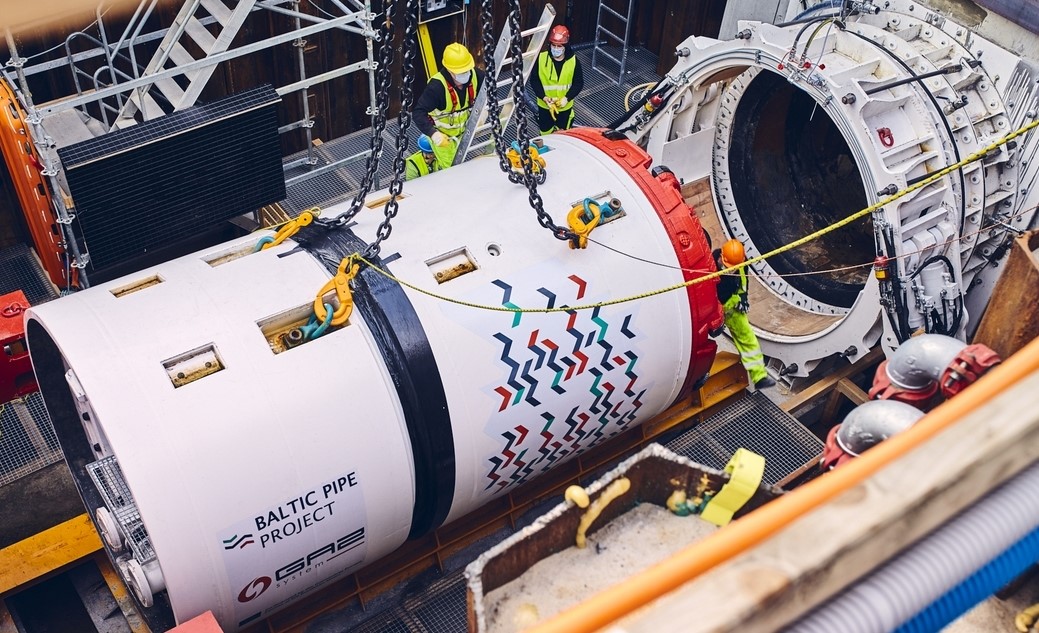Poland’s new pipeline bringing Norwegian gas via Denmark and through the Baltic Sea – which is due to open this week – will be able to transport up to twice as much gas as previously planned this year due to the faster-than-expected progress of work.
The Baltic Pipe, which is seen as a key element in Poland’s diversification away from Russian energy sources, is due to begin transporting gas this Saturday, 1 October, with an initial capacity equivalent to 2-3 billion cubic metres (bmc) per year.
It was then expected to reach its full capacity of 10 bcm of gas per year at the start of 2023. However, on Saturday Danish gas system operator Energinet announced that work “is progressing so well” that full capacity is due to be reached by the end of November this year.

The route of the Baltic Pipe bringing Norwegian gas to Poland via Denmark and the Baltic Sea (Lemiel/Wikimedia Commons, under CC BY-SA 4.0)
“We are pleased to announce that a major part of the vast project has [already] been completed and is ready for use,” said Torben Brabo, Energinet’s director of international relations.
“Due to an extraordinary effort on the part of everyone involved, we were able to lay the remaining pipelines faster than expected,” he added. “Full commissioning can therefore take place ahead of time.”
Later on Saturday, the Polish government’s commissioner for strategic energy infrastructure, Mateusz Berger, confirmed the news to the Polish Press Agency (PAP) and revealed that the accelerated schedule would allow up to twice as much gas as planned to be imported in the final quarter of 2022.
A day earlier, Norway’s state-owned energy giant Equinor had announced that it has entered into a 10-year agreement to sell 2.4 billion cubic metres (bcm) of natural per year – around 14% of Polish annual consumption – to Poland’s state gas firm PGNiG via the Baltic Pipe.
PGNiG, which has booked around 80% of the pipeline’s capacity, said that its own output from the Norwegian shelf – estimated at around 3 bcm this year and 4 bcm annually in coming years – will make up most of the gas transported through the pipe, reports Reuters.
The Baltic Pipe, construction of which began in 2020, is around 900 kilometres long in total and is being built at a cost of at least €1.6 billion, reports PAP. Around €250 million of that total has been provided by the European Union.
Norway’s Equinor has entered into a 10-year agreement to sell natural gas to Poland that will cover around 15% of Polish annual consumption.
The gas will be transported through the new Baltic Pipe, which is due to open next week https://t.co/ZXRdv7uBtP
— Notes from Poland 🇵🇱 (@notesfrompoland) September 24, 2022
In June, it was announced that the longest onshore element of the pipeline, 191-kilometre stretch running across Poland, had been completed ahead of schedule. The following month, Poland’s gas system operator, Gaz-System, revealed that the pipeline had been connected to the Polish and Danish transmission systems.
The pipeline is part of Poland’s long-running efforts to diversify away from Russian energy supplies. That included the opening of a liquefied natural gas (LNG) terminal in Świnoujście in 2015 and another planned floating LNG terminal in Gdańsk.
After Russia’s invasion of Ukraine, the Polish government accelerated such efforts, announcing that it would end all Russian energy imports this year. Subsequently, in April, Russia’s Gazprom cut off its supply of gas to Poland after Warsaw refused its demand to pay in roubles.
Main image credit: Gaz-System press materials

Daniel Tilles is editor-in-chief of Notes from Poland. He has written on Polish affairs for a wide range of publications, including Foreign Policy, POLITICO Europe, EUobserver and Dziennik Gazeta Prawna.



















